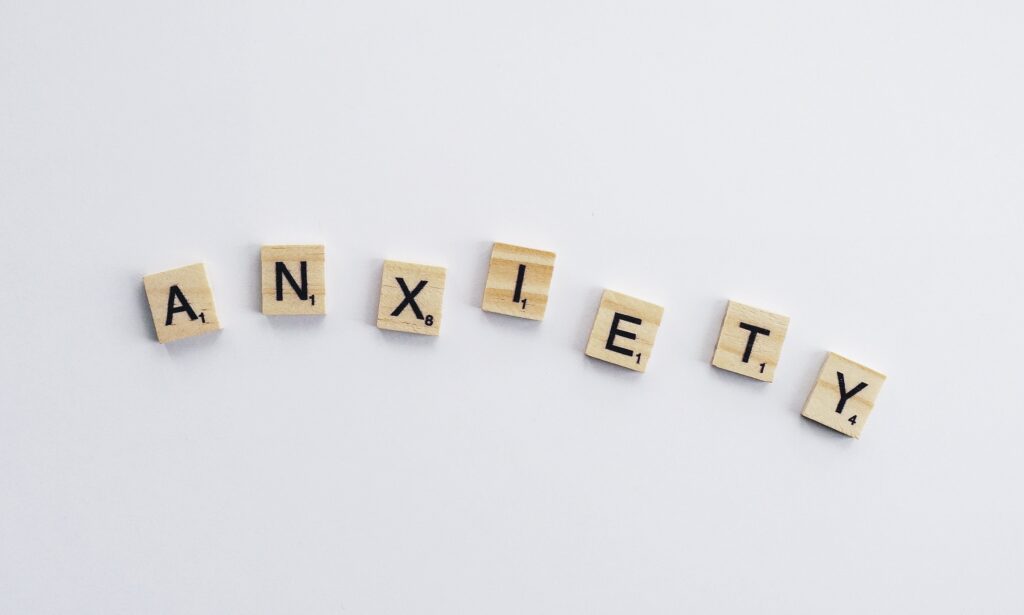
In today’s fast-paced and often stressful world, anxiety has become a common affliction that affects millions of people. The wisdom of Acupuncture and Traditional Chinese Medicine (TCM) offers unique ways to help alleviate the side effects of stress and anxiety. This article explains a few common and beneficial acupressure/ acupuncture points to help…
While there are various treatments for anxiety, many individuals look to natural and holistic therapies such as acupuncture to find relief. This article will explore the specific acupuncture points and their potential to alleviate anxiety.
Understanding Acupuncture
Acupuncture, a key component of Traditional Chinese Medicine, has been practiced for centuries. It involves inserting thin, sterile needles into specific points on the body to stimulate the body’s natural healing mechanism, or “Qi.” According to TCM imbalances in the body’s energy can lead to various health issues, including anxiety. Acupuncture aims to restore the harmonious flow of Qi and promote overall well-being. It also provides an opportunity to quiet the mind, engage in breathwork practices, and get more in tune with the body and emotions.
Acupuncture Benefits
- Stress Reduction: A study published in the journal BMC Complementary and Alternative Medicine found that acupuncture significantly reduced stress levels in women with premenstrual syndrome.
- Anxiety Relief: Anxiety is a common ailment and a leading cause of disability. A systematic review and meta-analysis of randomized controlled trials published in 2021 showed positive results for patients who engaged in acupuncture to help ease anxiety related to doctor and dentist visits, patients unable to tolerate the long-term effects of medication, and generalized anxiety disorder (GAD).
- Depression Management: Acupuncture has shown efficacy when dealing with mood issues and has shown patients to find a significant reduction in the severity of depression.
- Improved Quality of Sleep: Many individuals dealing with stress and anxiety unfortunately also have issues sleeping, whether that be falling asleep, staying asleep, or getting a calm restful slumber. Acupuncture has been shown to improve the quality and duration of sleep, in turn allowing people to have more energy to face daily stressors and emotions.
Acupuncture is also very effective when used in conjunction with other evidence-based approaches, such as herbs, therapy, and medication as determined by a healthcare provider.
Understanding Acupressure
Acupuncture points also referred to as acupoints, can be activated either during acupuncture sessions administered by licensed practitioners or through acupressure, a needle-free technique that involves applying pressure with your hands or fingers.
If you are reading this article at home and are looking to perform acupressure on yourself follow these general steps:
- Identify the Acupressure Points: Locate the specific acupressure points relevant to your needs. These points are typically found along meridians, which are pathways of energy in the body.
- Find a quiet and comfortable place to sit or lie down. You may want to dim the lights, play calming music, or create a relaxing atmosphere.
- Apply Pressure: Use your fingers, thumbs, or the heel of your hand to apply gentle but firm pressure to the chosen acupressure point. Press and hold the point for 30 seconds to a few minutes. You can vary the pressure based on your comfort level.
- Breathe and Relax: While applying pressure, focus on your breath. Taking slow, deep breaths to help relax your body and mind may be one of the most important aspects of this modality. After the recommended time, release the pressure gradually. Pay attention to how your body responds to the treatment.
- Repeat: You can repeat the process on the same point or move to other points as required. The frequency and duration of acupressure may vary based on your specific goals.
Acu Points to Help Alleviate Anxiety
- Shen Men, Heart 7 (HT7)

Shen Men, also known as “Spirit Gate,” is located on the wrist’s crease, on the pinky, or ulnar side. This point is renowned for its calming effects on the mind and heart. When stimulated, Shen Men can help alleviate anxiety, reduce insomnia, and improve emotional stability. It is often used in acupuncture treatments for stress and emotional imbalances.
- Yin Tang

Yin Tang, often referred to as the “Third Eye Point,” is located between the eyebrows, right on the forehead’s center. Stimulating this point can help calm the mind, relieve stress, and reduce anxiety. It is especially effective in treating tension headaches, which often result from chronic stress and anxiety.
Nei Guan, Pericardium 6 (PC6)

Pericardium 6, also known as Nei Guan, is located on the inside of the midline of the wrist, about two inches from the crease. This point is known for its effectiveness in reducing nausea and anxiety. It is widely used to alleviate anxiety-related symptoms, such as racing heart and palpitations, making it a valuable tool in anxiety management.
San Yin Jiao, Spleen 6 (SP6)

Spleen 6, located just above the ankle, is a versatile acupuncture point used to address a variety of issues, including anxiety. By stimulating SP6, you can help balance emotions, reduce anxiety, and promote relaxation. It is also beneficial for women dealing with menstrual-related anxiety and emotional disturbances.
Shu Fu, Kidney 27 (KD27)

Kidney 27, located on the chest, on the lower border of the collarbone, 2 cun lateral to the anterior midline essential acupuncture point for anxiety. By stimulating KD27, you can reduce chest tension, shortness of breath, and anxiety-related symptoms. This point is particularly effective in managing anxiety and panic attacks.
Bai Hui, Governing Vessel 20 (GV20)

Governing Vessel 20, also known as Bai Hui, is located at the top of the head, along the midline. It is a crucial point for overall mental well-being. By targeting GV20, you can help calm the mind, improve concentration, and reduce anxiety. It is often used in conjunction with other points to provide comprehensive anxiety relief. Place your thumbs lightly above the ears, and use your pointer finger to stimulate the acupoint on the top of the head in small firm circles can help to access the numerous benefits of this point.
Conclusion
Acupuncture offers a holistic and natural approach to managing anxiety by targeting specific acupoints that can restore balance to the body’s energy system.
While acupuncture is not a standalone treatment for severe anxiety disorders, it can complement conventional therapies and provide relief for individuals experiencing mild to moderate anxiety.
Incorporating acupuncture into your anxiety management strategy may lead to a more balanced and peaceful state of mind, allowing you to face life’s challenges with renewed resilience and calm. By understanding and harnessing the power of acupuncture points like HT7, Yin Tang, PC6, SP6, HT7, KD27, and GV20, you can take a significant step towards achieving anxiety relief and a healthier, more balanced life.
Resources
Jang, S.H., Kim, D.I. & Choi, MS. Effects and treatment methods of acupuncture and herbal medicine for premenstrual syndrome/premenstrual dysphoric disorder: systematic review. BMC Complement Altern Med 14, 11 (2014).
Yang, Xy., Yang, Nb., Huang, Ff. et al. Effectiveness of acupuncture on anxiety disorder: a systematic review and meta-analysis of randomized controlled trials. Ann Gen Psychiatry 20, 9 (2021).
